
Suizenji Park
Yolanda Marta KartikaSuizenji Park has replicas of popular places in Japan and is a must-see when in Kumamoto

Suizenji Jojuen is a traditional Japanese landscape garden that was laid out in the late 1600s. Due to its enormous size of 64 hectares, it is often referred to as Suizenji Park. Originally it was planned by Prince Hosokawa Tadatoshi to enjoy tea there in peace Its name comes from a former Buddhist temple there, while the garden now houses a Shinto shrine in which the Hosokawa family is buried.
The garden is supposed to represent the 53 stations of the old Tokaido Street, a former trade route that ran between Tokyo and Kyoto. The highlight is the miniature representation of Mount Fuji, as well as a reduced form of the Fushimi Inari Shrine in Kyoto. The tea house there originally comes from the Imperial Palace in Kyoto and is open to the public.
The Suizenji Jojuen is located in the city of Kumamoto on the southern main island of Kyushu and, along with the Kumamoto Castle, is one of the city's main attractions.
30-minute tram ride from JR Kumamoto Station to Suizenji Koen tram stop
10-minute walk from JR Shin-Suizenji Station

Suizenji Park has replicas of popular places in Japan and is a must-see when in Kumamoto

Rich with history and natural beauty, Suizenji Garden will capture the hearts of all those who enter, transporting them back to the grandeur of pre-modern Japan.
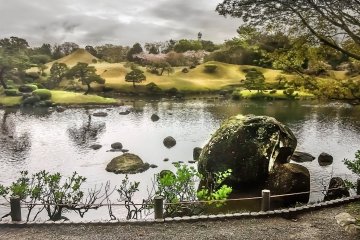
Kyushu's tranquil Suizenji Garden offers the perfect blend of man-made beauty within a natural looking landscape

The cherry blossom comes but once a year, and in a few days, it vanishes, scattered by the wind. Poets and lovers have gathered under its display for centuries, and in Kumamoto’s Suizenji Park, the cherry blossom festival celebrates the coming of the New Year with ancient readings and tea ceremonies, where you can sit on a tatami mat and admire the manicured gardens which represent the 53 road stations of the Tokaido.

A beautiful Japanese garden in Kumamoto City with tons of green nature and animals of various kinds.
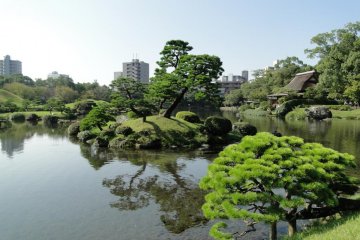
Suizen-ji, Kumamoto's 400-year-old traditional garden, is an easy jaunt from the city's castle and a must see for any visitor.
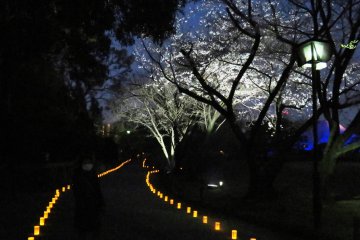
Suizenji is in an historical part of Kumamoto City. So old, that in 1636, Lord Hosakawa chose this site to build his garden, one that took 80 years and several generations to complete.

Over 66,000 purple irises in several varieties bloom in the Takaseura River in late May to early June during the Tamana Iris Festival.
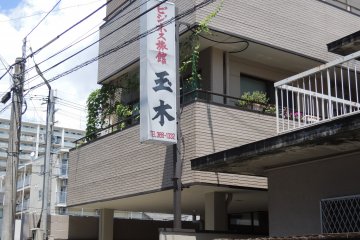
Business Ryokan Tamaki is a Japanese inn located in downtown Kumamoto. Enjoy down-to-earth Japanese hospitality and local food in a family-run hotel.

Hotel Nikko Kumamoto provides the most luxurious, comfortable, and convenient accommodation in Kumamoto City.

The Presidential Suite room at Hotel Nikko Kumamoto has a great view of Kumamoto Castle.
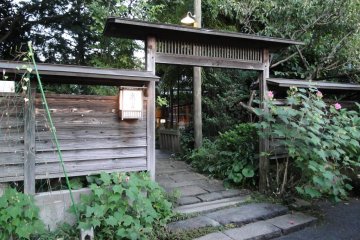
Senri Restaurant offers fine dining with an unforgettable view of Kumamoto's Suizen-ji Garden
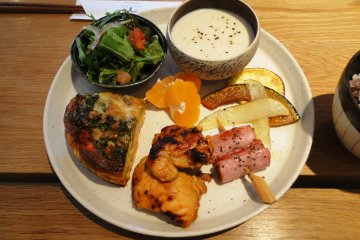
Cafe La Paix is a simple, relaxing cafe located just around the corner from Kumamoto's popular Suizen-ji Garden and literally across from a convenient tram stop.

Premium pork ramen with tonkotsu (pork bone) stock and handmade noodles, Topped with thin tender slices of pork belly, cabbage, green onions, slivered carrots.

Kumamon Square is the" "office" "of the famous mascot Kumamon of Kumamoto Prefecture. The bear mascot was created in 2011 to improve public relations in Kumamoto. Kumamon works as an official of the prefecture and is with the dual roles of sales manager and sales manager Happiness Manager for Kumamoto Prefecture. In Kumamon Square there is an exclusive souvenir shop, there are food stalls and an event stage. In the square, visitors have numerous opportunities to take photos and experience Kumamon up close. There are also live shows to which Kumamon dances. Kumamon Square is full of trophies the popular bear received from all over Japan.
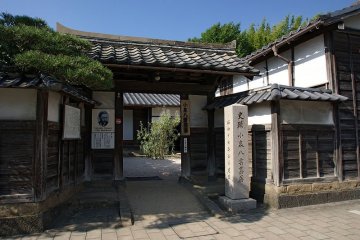
Lafcadio Hearn was born in Greece in 1850 to a father from Ireland and a mother from Greece. He was a British explorer who came to Japan in the 18th century and became a well-known author who introduced aspects of Japanese culture to the western world . In addition to his thirty other publications, Hearn was best known for his short story book "" Kwaidan "". His writings have been praised for their authentic views of Meiji-era Japan, unbiased from its Western origins. He lived in Matsue for about a year of his life and his former residence is now open to the public, along with a museum next door dedicated to his work and person.

Kumamoto Castle is the third largest castle in Japan and one of its most popular historic sites. Originally built in the early 1600s by renowned castle architect Kato Kiyomasa, the fortification was burnt during the Seinan Civil War in 1877 and again sustained damage in the powerful earthquakes of 2016. Though an earlier fortification had stood on the site since the mid-1400s, the foundations for the current incarnation of Kumamoto Castle were first laid in 1600 by local warlord Kato Kiyomasa. Having studied castle design during Toyotomi Hideyoshi’s Korea campaign, Kato constructed some of the most impressive defensive walls in the nation at his new fortress. The Kato family was replaced as lords of the region a mere half-century later and the castle came under the control of the Hosokawa clan. During the Satsuma Rebellion of 1877, samurai leader Saigo Takamori laid siege to the fortress. Despite his efforts, the inhabitants outlasted him, though the main keep mysteriously burned during the struggle. A new main tower was built in 1960, which houses a history museum and an observation deck on the top level. Kumamoto Castle is one of the top spots for hanami, or cherry blossom viewing, in late March and early April. Around 800 sakura bloom around the Kumamoto Castle Park, drawing thousands of picnickers to enjoy the colorful spring scene. Visitors to the city can learn a bit more about Kato’s castle building techniques, among other things, at the Wakuwaku-za, a cultural complex located in the Josaien complex at the base of the castle. An assortment of shops and restaurants make this a good stop for locally-themed souvenirs or lunch; local delicacies here include horsemeat croquettes, spicy lotus root tempura, and a vermicelli noodle dish known as taipien. In April 2016, the Mashiki district of Kumamoto city was struck by two severe earthquakes. The disasters caused damage to several of the original watchtowers, and many of the rooftiles on the main keep were dislodged. The castle is currently closed to visitors while a 20-year renovation process is carried out. Specialists are attempting to use traditional methods and techniques to restore the castle, making it a vital project in understanding the castle construction of the feudal era. However, parts of the main keep and grounds will open for a limited time during the World Rugby Championships in October 2019.